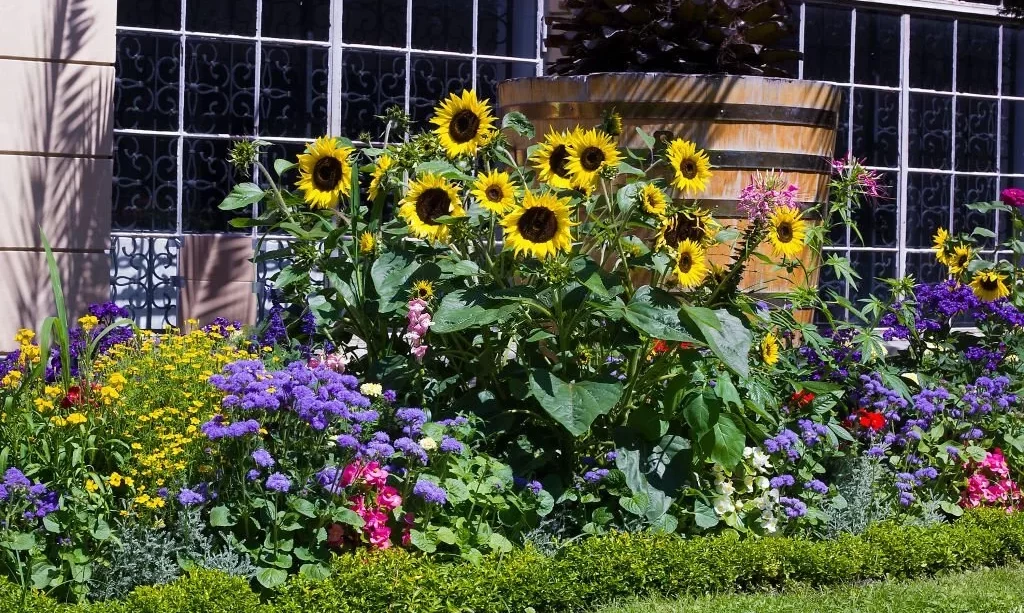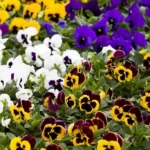Sunflowers, with their radiant golden petals and tall, sturdy stems, are undeniably one of nature’s most captivating creations. These iconic blooms have found their way into our hearts, adorning gardens, floral arrangements, and home decor. Yet, as we admire their beauty, it’s natural to wonder about the seasonality of sunflowers. Do these cheerful flowers grace us with their presence year-round, or do they have specific seasons when they shine brightest? In this article, we will delve into the world of sunflowers, exploring the various varieties, and understanding the seasons when they flourish. Whether you’re a gardener looking to cultivate these joyful blossoms or simply an admirer of their charm, join us on a journey to uncover the seasonal availability of sunflowers.
- Diverse Sunflower Varieties: Includes Autumn Beauty, Dwarf Sungold, Grey Stripe, Lemon Queen, Mexican Sunflower, Velvet Queen, Mammoth, and more
- Varied Heights: Designed to grow sunflowers ranging from 18 inches to 7 feet tall; annual seeds perfect for direct outdoor sowing
- Season-Long Blooms: Enjoy sunflowers that bloom throughout the summer in vibrant yellow, orange, and red; seeds are easy to collect and save for next year
- Owned Small Business: Hand-packaged by a small, family business dedicated to quality and customer care
Sunflower Varieties
Sunflowers, as a diverse and vibrant group of flowers, come in a variety of shapes, sizes, and colors. It’s essential to acquaint ourselves with these distinct sunflower varieties:
- Traditional Sunflower (Helianthus annuus): This is the classic sunflower, known for its bright yellow petals and dark central disks. It’s the variety often associated with fields of sunflowers swaying in the summer breeze.
- Dwarf Sunflowers: These sunflowers are smaller in stature and are well-suited for pots and smaller garden spaces. They still boast the iconic yellow and black sunflower look but on a more compact scale.
- Branching Sunflowers: These varieties produce multiple blooms on a single stem, creating a profusion of sunflowers from a single plant. They can vary in size and color, offering a unique twist on the traditional sunflower.
Understanding the range of sunflower varieties allows us to appreciate the diverse beauty and characteristics that these flowers bring to our gardens and landscapes.
Sunflowers: A Seasonal Perspective
To grasp the seasonal availability of sunflowers, it’s crucial to consider their natural growing patterns:
- Late Spring: In late spring, some sunflower varieties begin to bloom, signaling the arrival of warmer weather. These early bloomers add a burst of color to gardens as they kick off the growing season.
- Summer: The peak season for sunflowers typically occurs during the summer months. The warm temperatures and ample sunlight of this season create ideal conditions for sunflowers to thrive and display their vibrant hues.
- Early Fall: As summer transitions into early fall, sunflowers can continue to grace us with their presence, depending on the variety and local climate. They provide a beautiful link between the vibrancy of summer and the changing colors of autumn.
Understanding this seasonal perspective helps us appreciate that sunflowers have their moments of glory during late spring, summer, and early fall. These are the times when they thrive and bring their radiant beauty to gardens and landscapes. In the following sections, we will explore these seasonal aspects in more detail and discuss how to cultivate and enjoy sunflowers during their peak times.
Springtime Sunflowers (Late Spring)
Late spring marks the first appearance of sunflowers in many regions. These early bloomers usher in the warmer season with their vibrant colors and cheerful disposition. Planting sunflowers in early spring allows them to establish their roots and prepare for their spectacular show. Varieties such as the traditional sunflower (Helianthus annuus) often take center stage during this period. Gardeners and nature enthusiasts eagerly anticipate the arrival of these resilient flowers, which signal the end of the colder months and the beginning of more vibrant, sun-kissed days.
Summer Splendor (Summer)
Summer is unquestionably the season when sunflowers shine the brightest. With ample sunlight and warmth, this is when most sunflower varieties, including the iconic Helianthus annuus, reach their peak. Fields of towering sunflowers create stunning landscapes, attracting both pollinators and admirers. Gardening enthusiasts find joy in cultivating sunflowers during this season, knowing that they will be rewarded with an explosion of color and natural beauty. From gardens to floral arrangements, sunflowers become a symbol of the sunny and carefree days of summer.
Transitioning into Fall (Early Fall)
As summer gracefully transitions into early fall, some sunflower varieties continue to bloom. Their presence adds a touch of warmth and vibrancy to gardens, offering a visual bridge between the brilliance of summer and the changing foliage of autumn. These early fall sunflowers serve as a reminder of the seasonal shifts in nature, and their resilience is a testament to the enduring beauty of these flowers. Gardeners who plant varieties with extended blooming periods can enjoy sunflowers well into early autumn.
Year-Round Possibilities
While sunflowers have their peak seasons, there are year-round possibilities for enjoying their charm. For those who wish to have sunflowers in their lives beyond their natural seasons, controlled environments such as greenhouses provide the means to cultivate them year-round. Additionally, sunflower seeds and dried sunflowers are available throughout the year. These seeds can be planted at various times, allowing for staggered blooms and continuous enjoyment.
Conclusion
In conclusion, sunflowers are indeed seasonal treasures, each phase of their bloom mirroring the changing seasons. From late spring’s early arrivals to the grand spectacle of summer and the transition into early fall, sunflowers offer us a visual journey through the seasons. As we admire their vibrant petals and their role in our gardens and landscapes, we are reminded of the beauty and resilience of nature.
While the peak seasons for sunflowers are defined, their appeal is timeless. Whether you’re a gardener eagerly awaiting the arrival of late spring blooms or someone who enjoys sunflower-themed decor and products year-round, these flowers hold a special place in our hearts. So, as you appreciate the splendor of sunflowers in their respective seasons, remember that their beauty, like the changing seasons, is a part of the natural rhythm of life.




